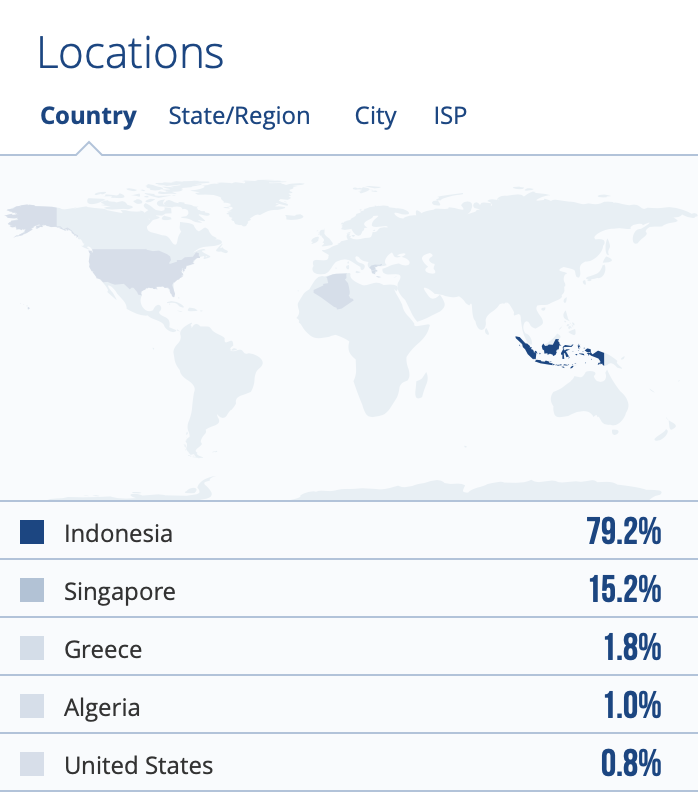EXPRESSIVE SPEECH ACTS IN STAND-UP COMEDY BY RADITYA DIKA
DOI:
https://doi.org/10.31980/eeal.v7i1.226Keywords:
Expressive Speech Act, Stand-Up ComedyAbstract
This study delved into the realm of expressive speech acts within stand-up comedy, with a specific focus on Raditya Dika's "Cerita Cintaku" YouTube series. Drawing from John Searle's theoretical framework, which encompassed emotion-showing, mood-indicating, aesthetic judgment, and expressive vocabulary, the research explored the intricate dynamics of linguistic choices and audience responses. Employing a qualitative case study approach, two selected videos were analyzed to unravel the nuanced use of expressive speech acts. The findings shed light on Raditya Dika's comedic craft, emphasizing the interplay between expressive speech, emotional expression, and inherent humor. The abstract underscored the specificity of linguistic elements, provided insights into the chosen methodology, and articulated the interface between Searle's theory and the empirical findings. This research contributed to a deeper understanding of the role of expressive speech in stand-up comedy, offering a unique perspective on audience engagement and comedic impact.
References
Abraham, D. (2020). Winning Over the Audience: Trust and Humor in Stand‐Up Comedy. Journal of Aesthetics and Art Criticism, 78(4).
Astuti, A., Novitasari, L. & Suprayitno, E. (2023). Gaya Bahasa dalam Kumpulan Cerpen Tak Semanis Senyummu Karya Sirojuth. Jurnal Bahasa dan Sastra, 10(1). https://jurnal.stkippgriponorogo.ac.id/index.php/JBS
Atmojo, A. E. P. & Putra, T. K. (2022). Investigating Indonesian EFL Pre-Service Teachers’ Conceptions of Culture and Intercultural Competence. Studies in English Language and Education, 9(2). https://doi.org/10.24815/siele.v9i2.22673
Burt, M. (2022). Comedians Are Leaders: Comedians’ Use of Humor Makes Us Feel Like We Matter. Journal of Advertising.
Cannon, B. W. (2024). The James-Lange Theory of Emotions: A Critical Examination and an Alternative Theory.
Constantinescu, N. (2023). The Magic of Callback Humor. Sage Journal.
Dedace, R. J. (2023). The Rhetoric of Comedy: Exploring the Language and Humour Styles of Filipino Stand-up Comedians.
Faizah, N. R. A. & Rustono. (2017). Implikatur dalam Wacana Stand Up Comedy Indonesia Sesi
Dodit Mulyanto di Kompas TV. Jurnal Sastra Indonesia, 6(1). https://journal.unnes.ac.id/sju/index.php/jsi.
Guiraud, Nadine, Donimique, L., Emiliano, L., Sylvie, P., and Jérémy, R. (2011). The face of emotions: A logical formalization of expressive speech acts.
Gvoždiak, V. (2012). John Searle’s Theory of Sign
House, J & Kadar, D. Z. (2022). Research Report: Cross-cultural Pragmatics. JOALL.
Keisalo-Galvan, M. P. (2017). Picking People to Hate': Reversible reversals in stand-up comedy. Journalof the Finnish Anthropological Society.
Laver, J. (1999). Towards An Integrated Theory of Nonverbal Communication.
Mao, L. R. (1994). Beyond Politeness Theory: “Face” Re-visited and Renewed. Journal of Pragmatics. http://dx.doi.org/10.1016/0378
Mey, J. L. (2001). Pragmatics: an introduction, 2nd ed. Oxford: Blackwell Publishing.
Norrick, N. R. (1978). Expressive illocutionary acts. Journal of Pragmatics,
Ödmark, S. (2018). Making news funny: Differences in news framing between journalists andcomedians.
Papana, R. (2018). Stand Up Comedy Indonesia, Kitab Suci. Jakarta: Media Kita.
Putra, T. K. & Supriyadi, S. (2020). Cultural Representation and Intercultural Interaction in Textbooks of English as an International Language. Journal on English as a Foreign Language, 10(1). https://doi.org/10.23971/jefl.v10i1.1766
Rini, S. & Wagiran. (2018). Humanist Expressive Utterance Function and Form in Teaching Learning Interaction at Vocational High School. Seloka, 7(3).
Rullyanti, M., & Nurdianto, N. (2019). Language Style of Humor on Stand-Up Comedy Video. Rutte, A. (2021). Physical Comedy and Charlie Chaplin. JOALL
Searle, J. R. (1969). Speech acts: An essay in the philosophy of language. Cambridge: CambridgeUniversity Press.
Tomsett, E. (2018). Positives and Negatives: Reclaiming the Female Body and Self- Deprecation in Stand Up Comedy.
Vanderveken, D. (1990). Principles of Language Use. Cambridge: Cambridge University Press.
Wulandari, R. S. & Harida, R. (2021). Grammatical Error Analysis in Essay Writing. Deiksis, 13(1). https://doi.org/10.30998/deiksis.v13i1.5356
Yule, G. (2006). Pragmatik (Terjemahan Rombe Mustajab). Yogyakarta: Pustaka Pelajar.
Downloads
Published
How to Cite
Issue
Section
License
Copyright (c) 2024 English Education and Applied Linguistics Journal (EEAL Journal)

This work is licensed under a Creative Commons Attribution-NonCommercial-ShareAlike 4.0 International License.






